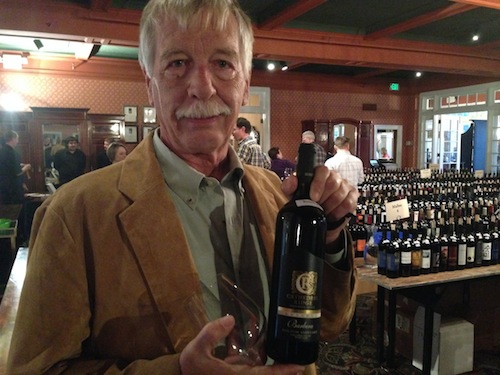
HOOD RIVER, Ore. — A famous American novel, a bet with his father and a hitchhiker’s thumb led Robb Bell from Pittsburgh, Pa., to the West Coast.
Before returning home, the teen stumbled upon the grandeur surrounding Oregon’s Hood River, which he never forgot. Years later, the emerging Columbia Gorge wine industry proved to be a siren’s call.
 “I grew up in a simpler time in the ‘50s, and a very well-known book called On the Road by Jack Kerouac basically deified hitchhiking,” said Bell, owner of Cathedral Ridge Winery.
“I grew up in a simpler time in the ‘50s, and a very well-known book called On the Road by Jack Kerouac basically deified hitchhiking,” said Bell, owner of Cathedral Ridge Winery.
He made it to Hawaii in 1960 with some stories of his own to tell, and the train ride home from Portland that his father paid for — a return ticket to the Steel City — didn’t exactly go off without a hitch. He hopped off to explore the town of Hood River, lost track of time and didn’t get back to the train station when he should have.
“I must say I was a little in the bag,” Bell said with a smirk. “So I had an extra day in Hood River and hitchhiked up to Parkdale, and a ranger in the ranger station took me up to Lost Lake, which made an incredible and indelible impression upon me. It took me 20 years to get here after that, but I did. And I’ve had no regrets.”
It’s been quite a ride for Bell, who has turned Cathedral Ridge Winery into a Columbia Gorge destination. He purchased a winery with a fine reputation for aromatic whites and, with the help of Sonoma Valley winemaker Michael Sebastiani, shifted the focus to big reds. Those wines, made with local fruit, also earned acclaim.
We sat down with Bell at the historic Columbia Gorge Hotel in Hood River, a short drive from the downtown train station that the Pennsylvania native never forgot.
Here’s the interview:
[powerpress]
Please take a moment to click and leave an honest rating or review in the iTunes Store. It will help others learn about the wines of the Pacific Northwest.
Cathedral Ridge earns 2007 Oregon Winery of the Year
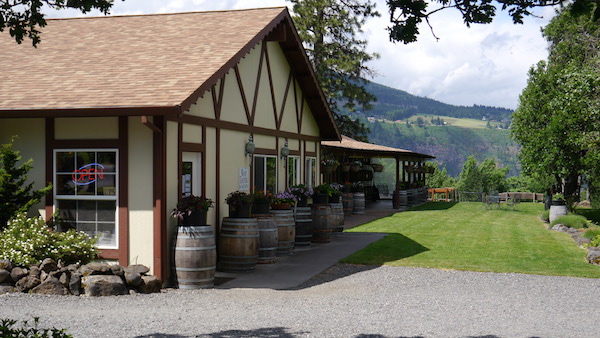
In 2007, Wine Press Northwest magazine named his peaceful and picturesque Cathedral Ridge as its Oregon Winery of the Year. And he’s seen the region grow from a handful of wineries to more than 30 tasting rooms, which are supplied by 50 vineyards — some of them rank among the oldest plantings in the Pacific Northwest.
“It’s Walla Walla revisited, only it’s an even broader palette than that,” Bell said. “You’ve got the Viognier, the Chardonnay, the Gris, the Tempranillo — I don’t see any of those being grown over there. And Cab Franc is very happy here.”
He’s also become an outspoken champion for Columbia Gorge region, not just Cathedral Ridge, as both sides of Columbia River have developed into a serious wine industry with restaurants and lodging emerging to support it.
“We’ve been very lucky in the Columbia Gorge,” Bell said. “We’ve had enough visitor traffic to keep everyone’s head above water.”
 After Bell moved to Hood River, he barely had to leave his house to find a worthy winery as Don Flerchinger, who opened his namesake winery as a family operation in 1985, wrestled with its future. And Bell was ready to make a lifestyle change, too.
After Bell moved to Hood River, he barely had to leave his house to find a worthy winery as Don Flerchinger, who opened his namesake winery as a family operation in 1985, wrestled with its future. And Bell was ready to make a lifestyle change, too.
“The winery was right at the end of my driveway, and I was becoming somewhat disenchanted with flying to San Francisco and Los Angeles every couple of weeks,” Bell said. “Don’s wife had unfortunately passed away, and he was of two minds — one day he wanted to keep the winery, the next day he wanted out. He’d built a very nice little Alsatian-styled winery, and I saw an opportunity.
“Now, I wouldn’t have done it without the aid and comfort of Michael Sebastiani, who I’ve known since he was born,” Bell added. “He agreed to back me up on the winemaking, and he’s done a fantastic job. We have great grapes here. The real task has been in marketing and getting the word out.”
In his former life with Procter & Gamble, Bell’s consulting work in California put him in a position to share his marketing expertise with a number of successful companies and CEOs, including Sam Sebastiani.
“They all became my clients over time,” Bell said. “So I learned a great deal about the business side of the winery business. I knew absolutely nothing about making it.”
In 2003, nearly two years after he first approached Flerchinger, Bell purchased the winery and brought in Michael Sebastiani, whose family has been making wine in Northern California for more than a century. He flies up from his Highway 12 Vineyards and Winery project in Sonoma every six to 10 weeks, while Bell serves as the day-to-day cellarmaster with Francisco Chairez as assistant winemaker and John Szeremi acting as vineyard manager.
“Michael set up all the protocols. He’s the go-to guy on anything that’s weird,” Bell said. “I think the distance is an advantage because winemakers can get way too close to their product.
“He contributes the blending — the arcane blends, the mystical black art,” Bell added. “Francisco and I make the wines — that’s block-and-tackle stuff. Anyone who does it will tell you it’s not nuclear science. You just have to really care a lot, do it just so, and have the courage to know that if you’ve screwed something up to ask him, test it and ask him what do we do about it.”
Great climate for vines, also lures tourists
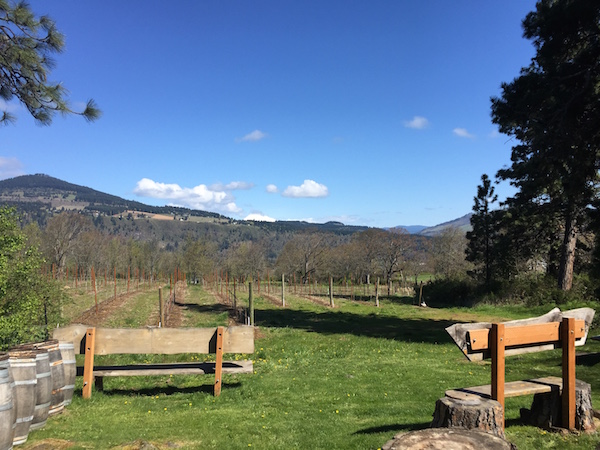
Tasting rooms in the Columbia Gorge benefit from their proximity to Oregon’s largest city — Hood River is about an hour’s drive from Portland International Airport — but those 60 miles to the east side of the Cascade mountains that lead to dry and warmer climate with stunning geology also have proven to be ideal for wine grapes.
“The growers were way ahead of the wineries,” Bell said. “There was Donald Graves and some fellows 40 or 50 years ago who planted substantial vineyards. They had trouble finding markets for their fruit, so they would take it to the (Willamette) Valley and get second-rate prices for it.”
Bell gives credit to the Flerchingers, Bob Lorkowski at Cascade Cliffs and Ron Johnson at Marshal’s Winery as well as Craig and Vicki Leuthold at Maryhill Winery for their pioneering efforts.
“Craig and Vicki should get extraordinary praise for terminal guts,” he said. “If we build it, they will come. Frankly, we don’t give them enough credit. About 30 percent of the traffic that goes through Hood River is on its way to Maryhill.”
And the growth of wine tourism along the Columbia Gorge could be likened to that of Lake Chelan in Washington.
“The visitor scene was already up and running, as opposed to the wineries attracting everybody,” Bell said. “And we have agribusiness here, so these orchards are having no trouble sliding over to a few acres of grapes. That’s a very good balance, and it’s spreading like wildfire up here.”
Columbia Gorge vintners also are similar to Washington state in that they haven’t identified a signature grape.
“I think we’re still feeling our way to what will be our dominant theme,” he said. “As Pinot Noir is to the Willamette Valley and Syrah or Cab may be to Walla Walla, maybe our destiny will be ‘renaissance’ in the respect that we’ve got it all here, and someone can make it as good as anywhere else. The very wide array of grapes is certainly something that’s fun for me.”
Fruit, talent both at hand
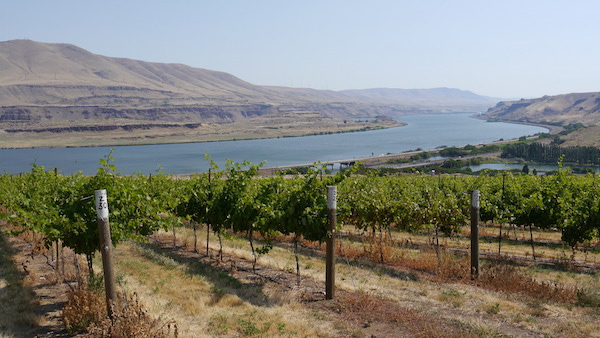
Perhaps it’s no coincidence that some of the Northwest’s most decorated and veteran winemakers — Peter Rosback, Rich Cushman and John Haw — spent some of their formative years working with Columbia Gorge fruit.
“What are the chances that we’d see several really checked-out winemakers early in their career?” he said.
Bell was quick to include Sebastiani, James Mantone of Syncline and Lorkowski as others who have made their name with regional fruit.
And then there’s young Kiwi winemaker Richard Batchelor, who within five years of arriving at Maryhill rewarded the Leutholds’ confidence in him by earning Winery of the Year at the prestigious 2014 San Francisco International Wine Competition and Wine Press Northwest’s 2015 Pacific Northwest Winery of the Year.
“They’ve accelerated the growth of the scene significantly,” Bell said. “I think we saved 10 years by having guys of that quality strap it on early here.”
Orchardists turned viticulturalists, with the help of longtime vineyard consultant Lonnie Wright of The Pines 1852, have turned out to be quick studies, too.
“We’re saving another 10 years because of the agrarian people here,” Bell said. “It’s not like we’ve got to pioneer growing things. Look at the Bickfords at Mt. Hood Winery. That Van Horn Riesling is to die for.
“We’ve truncated a lot of time,” Bell added. “We’ve gotten to maybe the 40th year (of progress) within 20 years, but you’ve got to get to 50 or 60 years old to really be good.”
Cathedral Ridge takes on challenge in Dundee
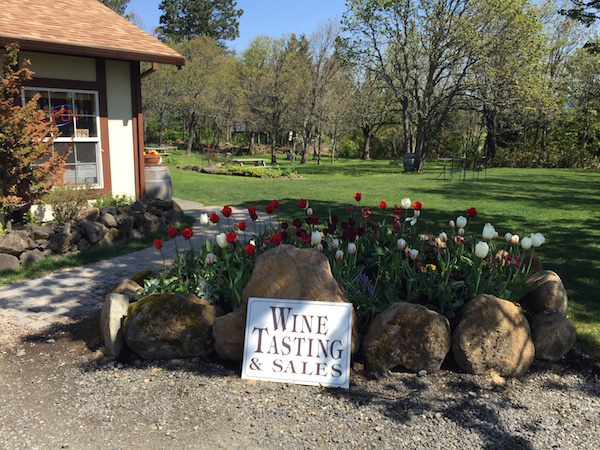
He’s also planted a flag in the Willamette Valley for the Columbia Gorge with a small tasting room in Dundee, where he said folks enjoy taking a break from expensive Pinot Noir by sampling the bold red varieties grown along the Columbia River and sold at more approachable price points.
“We have not become rapacious yet,” Bell said.
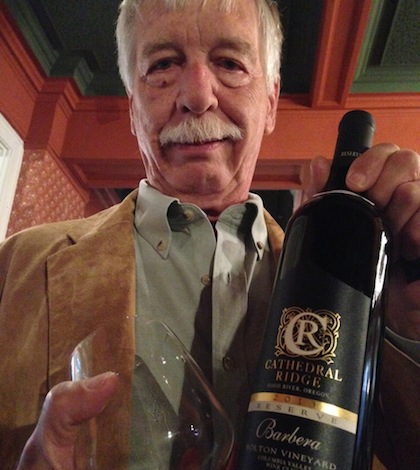
However, he does get a little chesty when it comes to pitting Columbia Gorge wines against some famous counterparts.
“Let’s get some $900 bottles of Napa, a few good Bordeauxs and the best bottles of wine in the Gorge, brown-bag them, and let’s see which ones the wine gods pick,” he said. “Wouldn’t that be fun? I’m not afraid.”
Last year, Cathedral Ridge Winery generated headlines across the country with its Barbera, winning a double gold at the 2014 San Francisco Chronicle Wine Competition — the nation’s largest judging — for the 2012 Bolton Vineyard Reserve Barbera. This year, the 2013 version of that vineyard grabbed gold at the Great Northwest Wine Competition.
“We’re still a nascent scene here,” Bell said. “Most of the wineries here are five to 10 years old, and we’re encouraging more of them to enter competitions and judgings. I think we can improve ourselves by loosening our girdle here a little bit.”
And according to Bell, the Columbia River is a powerful feature that both Washington and Oregon embrace, rather than viewing it as a natural boundary between rival states. He also appreciates the contingent of wineries in Lyle, Wash., on their effort to collaborate rather than compete openly.
“To their credit, the guys in Lyle — Domaine Pouillon, Memaloose, Cor and Syncline — get together once a month and taste some very fine wines, kick the ball around and try to improve themselves. So we’re having our first little self-improvement groups that transcend the egos that usually blight intramural winery relationships.”
Bell loves to point out that wine lovers in downtown Portland can be tasting in Hood River sooner than they can drive to McMinnville. He expects those visitors also will find a collegial climate in the Gorge.
“We all make nice. It’s sort of Sonoma here,” he said.
Exploration, education for wine tourists
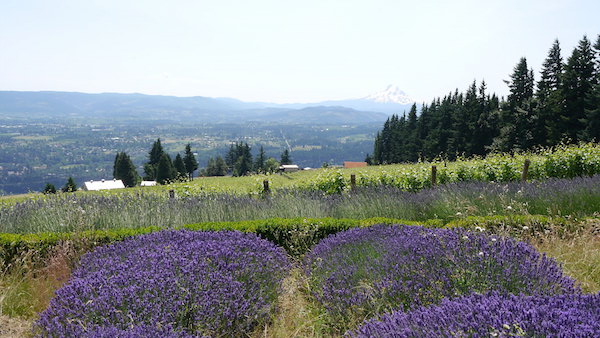
Few vintners seem to enjoy chatting and engaging with customers as much as Bell, who relishes educating them.
Recently, Cathedral Ridge launched what it calls Varietal Vertical Immersions and Varietal Vineyard Immersions — intimate seminars with Bell involving library wines and facilitated by his tasting room team.
“We’ll go back as far as ’04 in our little library,” he said. “The cliche that the wines in the Gorge are a little more acidic and theoretically should cellar better, may be on its way to being proven. We’re cleared for 10 years now, but we’re optimistic that they can go quite a bit further.”
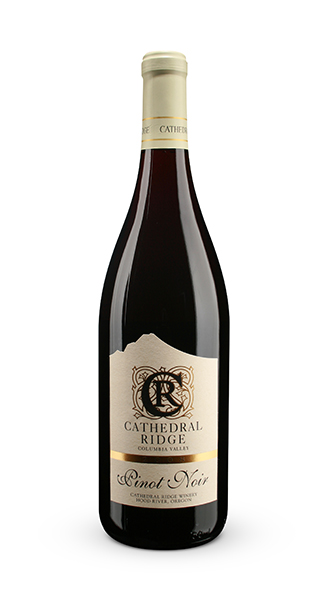 He schedules them in advance for $35 a person, and they allow him to spotlight his individual work with sites such as Hillside, Moody and his workhorse vineyard Bangsund.
He schedules them in advance for $35 a person, and they allow him to spotlight his individual work with sites such as Hillside, Moody and his workhorse vineyard Bangsund.
“Discovering vineyards is as much fun as discovering wine,” Bell said.
The veritable spice cabinet of wine grapes grown within an hour’s drive of Hood River allows Cathedral Ridge to experiment broadly for both its wine club and tasting room.
“Today at the wine bar we have 24 wines, and four of them are wine-club exclusives,” Bell said. “People want to try different things.”
He partners with the historic Columbia Gorge Hotel on lodging packages tied to the Vertical Immersions.
“These are total strangers, but people can discuss new wines with each other without feeling inept,” Bell said. “It’s proven to be a very stimulating activity. I think we’re going to be doing this every January, February and March for many years to come. We all want to have structure to these tastings, and here we have time — and in a big way.”
It’s a never-ending learning curve for anyone in the wine industry, Bell said. And while he’s well into his second decade of ownership at Cathedral Ridge Winery and producing 6,500 cases a year, the financial mistakes he’s made have not meant a “game over” situation. The same can be said for essentially every other winery in the Columbia Gorge Winegrowers Association.
“When I bought Flerchinger, there were basically three wineries in the Columbia Gorge before you got to Walla Walla,” Bell said. “Now they are pushing 35 and no winery has ceased operations here as a function of financial adversity. The rising tide has really lifted all the boats here, and customers like that we say nice things about the other people.”

Came across this quite by accident. Wish it could be shared — but alas, only the publication, not the article, is available. And that is too bad! While Robb Bell is a far more interesting and multifaceted character than this tells, this is a fascinating tale. The wines are certainly a great reason to visit Cathedral Ridge, but the chance of running into Robb should be an added inducement. He is as close as you will get to shaking hands with a real live “1923/Yellowstone” icon — just as that great picture shows! And yes, he had that same mustache 50 years ago! Amazing guy!!!